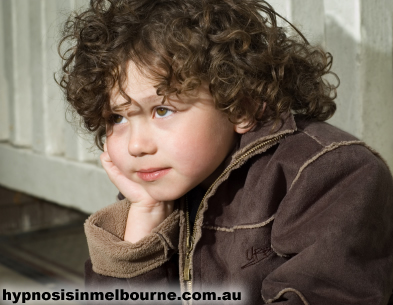The Role of Self-Hypnosis in Children Experiencing Pain
Self-hypnosis is an easy and useful technique for children to learn. Self-hypnosis is often taught to children by a trained hypnotherapist and it is designed to help them relax in difficult situations. The first step to self-hypnosis is to find a comfortable and quite place to sit or lie down to relax. The second step is to close your eyes and focus on relaxing both your mind and body; this should be done for about five minutes. Next, children are taught to imagine a relaxing, quiet, and happy place in their mind. This can be anywhere they want to be that makes them feel comfortable. They will want to involve their five senses, taking note of what they see, hear, smell, feel, and taste. Next they will count down from five and allow themselves to relax more and more deeply with each number they count.
At this point in time, children are very relaxed and are more open to suggestions. They are able to increase their focus and concentration on the task at hand. For example, if children are sick and are experiencing painful symptoms, they are able to increase their focus on reducing the amount of pain they experience and possibly eliminate it. The suggestions can be about anything and self-hypnosis has more than just therapeutic benefits. Self-hypnosis can increase confidence in children, improve their ability to focus, and increase awareness. Self-hypnosis has been shown to reduce the amount of medication needed to reduce symptoms. For example, children are able to use less pain medication when using self-hypnosis to control pain (Sugarman, 1996).
A study in The International Journal of Clinical and Experimental Hypnosis researched the use of hypnosis and cognitive behavioral therapy in children with cancer. These children needed to undergo bone marrow aspirations, a very painful procedure. This procedure involves a needle going through bone in order to collect bone marrow fluid.
The study involved 30 pediatric cancer patients ages 5-15. They were randomly selected into one of three groups. One group received hypnosis, another received cognitive-behavioral (CB) coping skills, and the third group received no therapy at all (control group). Both experimental groups received coping skills to help them manage pain and anxiety.
The results showed that the children in the hypnosis and CB groups reported less pain and anxiety compared to those in the control group who received no form of therapy. The patients in the experimental groups also reported an improvement in pain symptoms and anxiety compared to their baseline levels. The researchers found that both the hypnosis and CB were equally effective in reducing pain, but the hypnosis group reported less anxiety and distress (Liossi & Hatira, 1999).
Pediatric cancer is the fourth leading cause of death in children ages 1-19 in the United States (Pollack, Stewart, & Thompson, 2007). With so many children suffering the many side effects of cancer, it is important that research is being done to improve their quality of life.
These studies show that hypnosis has many implications in helping children reduce pain. Hypnosis is a natural method for controlling pain. Self-hypnosis helps children cope with pain and illnesses so that they can lead a more normal life.


